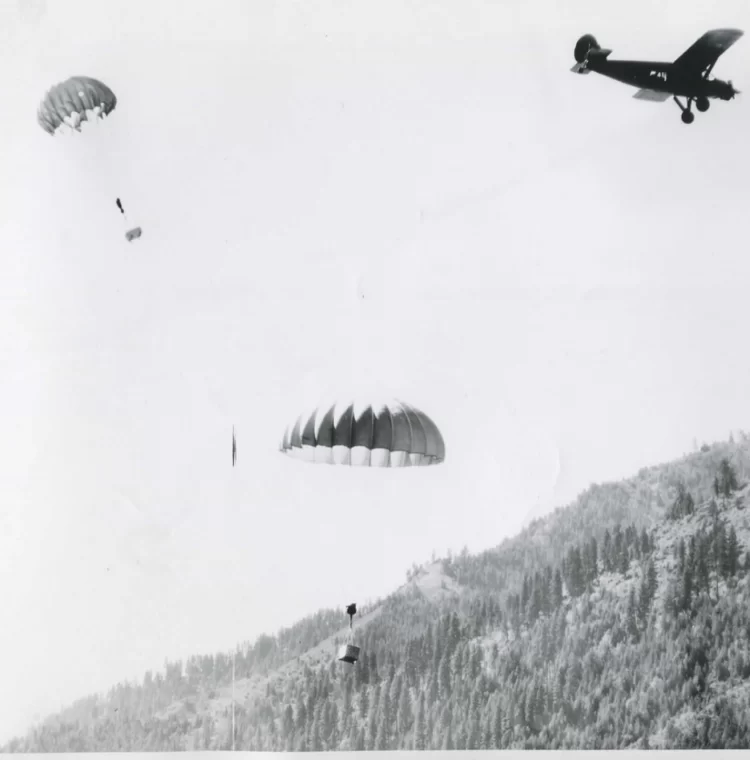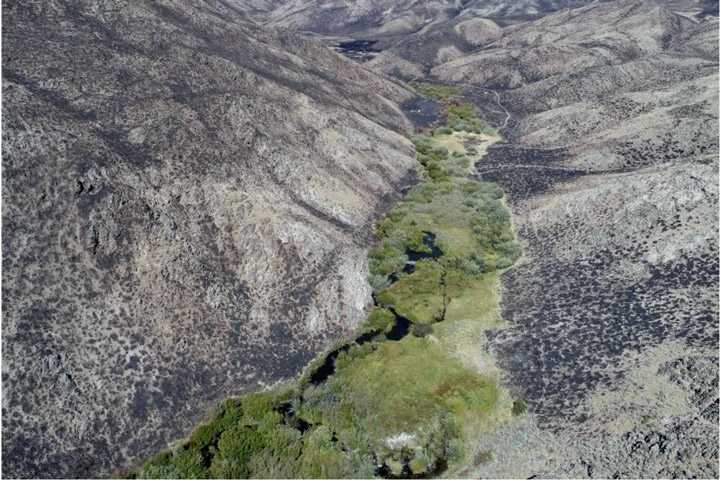Beavers are nature’s master builders. Their dams can change a landscape, creating wetlands and enriching the habitats of other species. They’re also cute, with fur that’s been highly prized in other eras.
But frequently they get in our way. Our developments don’t utilize dams made of trees and saplings. We like our land dry and protected from flooding. Wetlands are usually considered a nuisance.
That’s bad news for the beavers. When their engineering conflicts with ours, they’re going to lose every time.
That’s the way it was in Idaho in the 1940s. Beavers were in the wrong places. The humane solution would be to relocate them. But the areas devoid of human contact were inaccessible by road. How to get them there safely?

Idaho Fish and Game relocated beavers in the 1940s using parachutes to drop them into remote areas. Image via Idaho Fish and Game/ NPR.
Fortunately, someone thinking outside the box, or in this case thinking inside the box, came up with the perfect solution — use surplus World War II parachutes to drop beavers into these remote areas. Not that the beavers needed jump school — they would ride in boxes especially designed to pop open on impact. So until 1948, beavers were parachuted into what is part of the largest protected roadless forest in the lower 48 states.
And it worked! One excellent example of how the beavers reengineered the landscape is the Baugh Creek area of Idaho southeast of Sun Valley. Their dams have flooded the surrounding area, creating more verdant swaths of land with a wider variety of plant life.
The real payoff came in 2018 when the Sharps Fire burned more than 60,000 acres in the Baugh Creek area. But imagery taken after the fire showed the moist areas around beaver dams had fared much better against the flames.

The Baugh Creek area that was flooded by beaver dams survived the Sharps Fire of 2018 better than surrounding areas. Image via NASA Earth Observatory/ Fairfax/ Whittle.
The relocation project has worked so well that NASA is cooperating with researchers who are attempting to restore beavers throughout the West. This linked video describes their efforts in detail.
So if you live in the West, don’t be surprised if someday you see beaver-sized boxes dangling from parachutes.
For more information, see “Parachuting Beavers Created a Fire-Resistant Wetland” posted by
Kelly Kizer Whitt at https://earthsky.org/earth/parachuting-beavers-dams-fire-resistant-wetland/?.
